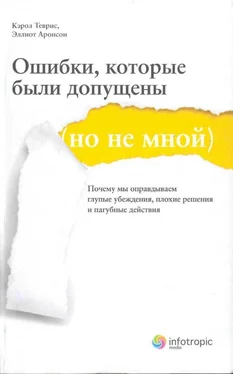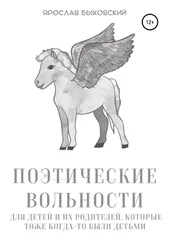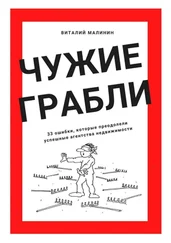[195]Deborah Davis and Richard Leo (2006), «Strategies for Preventing False Confessions and their Consequences», in M. R. Kebbell and G. M. Davies (eds.), «Practical Psychology for Forensic Investigations and Prosecutions». Chichester, England: Wiley, pp. 121–149. CM. также статьи Saundra D. Westervelt and John A. Humphrey (eds.) (2001), «Wrongly Convicted: Perspectives on Failed Justice». New Brunswick, NJ: Rutgers University Press.
[196]Цитировалось в: PBS show Frontline, «The Case for Innocence», October 31, 2000.
[197]D. Michael Risinger and Jeffrey L. Loop (2002, November), «Three Card Monte, Monty Hall, Modus Operandi and 'Offender Profiling': Some Lessons of Modern Cognitive Science for the Law of Evidence», Cardozo Law Review, 24, p. 193.
[198]Davis and Leo, «Strategies for Preventing False Confessions…», p. 145; примеч. 41.
[199]McClurg, «Good Cop, Bad Cop»; примеч. 19. В этой статье Макклург предлагает использовать когнитивный диссонанс для сокращения случаев лжи в полиции.
[200]Saul М. Kassin and Gisli Н. Gudjonsson (2004), «The Psychology of Confession Evidence: A Review of the Literature and Issues», особенно раздел «Videotaping Interrogations: A Policy Whose Time Has Come», Psychological Science in the Public Interest, 5, pp. 33–67. См. также: Drizin and Leo, «The Problem of False Confessions…», примеч. 2; Davis and O'Donohue, «The Road to Perdition», примеч. 28.
[201]Цитируется в: Jerome, «Suspect Confessions», p. 31; примеч. 5.
[202]Thomas P. Sullivan (2004), «Police Experiences with Recording Custodial Interrogations». Это исследование с обильными ссылками можно найти в Интернете на сайте http://www.law.northwestern.edu/wrongfulconvictions/Causes/custodiallnterrogations.htm. Однако последующие исследования показали, что угол, под которым установлена камера, может влиять на выводы наблюдателей, особенно, если камера сфокусирована исключительно на подозреваемом и не показывает интервьюера(ов). G. Daniel Lassiter, Andrew L. Geers, Ian M. Handley, Paul E. Weiland, and Patrick j. Munhall (2002), «Videotaped Interrogations and Confessions: A Simple Change in Camera Perspective Alters Verdicts in Simulated Trials», Journal of Applied Psychology, 87, pp. 867–874.
[203]Davis and Leo, «Strategies for Preventing False Confessions…», p. 145; примеч. 41. В Канаде руководители федеральных/провин- циальных/территориальных прокурорских комитетов the Federal/Provincial/Territorial Heads of Prosecutions Committee создали рабочую группу по предотвращению судебных ошибок.
[204]Thomas Vanes, «Let DNA Close Door on Doubt in Murder Cases», the Los Angeles Times op-ed, July 28, 2003.
[205]Джон Батлер Йетс своему сыну Уильяму, November 5, 1917. In Richard J. Finneran, George M. Harper, and William M. Murphy (eds.), Letters to W. B. Yeats, Vol. 2. New York: Columbia University Press, p. 338.
[206]Andrew Christensen and Neil S. Jacobson (2000), «Reconcilable Differences». New York: Guilford. Мы взяли отрывки истории Дебры и Фрэнка из первой главы, сс. 1–7.
[207]См.: Neil S. Jacobson and Andrew Christensen (1998), «Acceptance and Change in Couple Therapy: A Therapist's Guide to Transforming Relationships». New York: W.W. Norton.
[208]Christensen and Jacobson, «Reconcilable Differences», p. 9; примеч. 2.
[209]Есть много исследований, посвященных тому, как заключения, которые семейные пары делают относительно поступков друг друга, влияют на их чувства и брак. См., например, Adam Davey, Frank D. Fincham, Steven R.H. Beach, and Gene H. Brody (2001), «Attributions in Marriage: Examining the Entailment Model in Dyadic Context», Journal of Family Psychology, 15, pp. 721–734; Thomas N. Bradbury and Frank D. Fincham (1992), «Attributions and Behavior in Marital Interaction», Journal of Personality and Social Psychology, 63, pp. 613–628; and Benjamin R. Karney and Thomas N. Bradbury (2000), «Attributions in Marriage: State or Trait? A Growth Curve Analysis», Journal of Personality and Social Psychology, 78, 295–309.
[210]June P. Tangney, Patricia E. Wagner, Deborah Hill-Barlow, et al., «Relation of Shame and Guilt to Constructive versus Destructive Responses to Anger Across the Lifespan», Journal of Personality and Social Psychology, 70, 797–809.
[211]John Gottman (1994), Why Marriages Succeed or Fail. New York: Simon Schuster. О Фреде и Ингрид читайте на с. 69.
[212]См., например, Benjamin R. Karney and Thomas N. Bradbury (1995), «The Longitudinal Course of Marital Quality and Stability: A Review of Theory, Method, and Research», Psychological Bulletin, 118, pp. 3-34; и Frank D. Fincham, Gordon T. Harold, and Susan Gano-Phillips (2000), «The Longitudinal Relation between Attributions and Marital Satisfaction: Direction of Effects and Role of Efficacy Expectations», Journal of Family Psychology, 14, pp. 267–285.
[213]Gottman, «Why Marriages Succeed or Fail», p. 57; примеч.7.
[214]Цитируется в: Ayala M. Pines (1986), «Marriage», in C. Tavris (ed.), «Every-Woman's Emotional Well-Being». New York: Doubleday. История Эллен на с. 191; Донна и ее «книга ненависти» на сс. 190–191.
[215]Julie Schwartz Gottman (ed.) (2004), «The Marriage Clinic Casebook». New York: W.W. Norton. История этой семейной пары приведена в главе 4, «Extramarital Affairs: The Pearl in the Oyster», by Julie Gottman, p. 50.
[216]John Gottman, «Why Marriages Succeed or Fail», p. 127; его описание 46 семейных пар, см. с. 128; примеч. 7.
[217]Donald Т. Saposnek and Chip Rose (1990), «The Psychology of Divorce», in D.L. Crumbley and N.G. Apostolou (eds.), Handbook of Financial Planning for Divorce and Separation. New York: John Wiley. Их статья доступна в Интернете по адресу http://www.mediate.com/articles/saporo.cfm. Классическое исследование того, как семейные пары реконструируют воспоминания о своей семейной жизни и друг о друге: см.: Janet R. Johnston and Linda E. Campbell (1988J, Impasses of Divorce: The Dynamics and Resolution of Family Conflict. New York: Free Press.
[218]Jacobson and Christensen, «Acceptance and Change in Couple Therapy», примеч. 3, обсуждаются новые подходы, помогающие партнерам принять друг друга, вместо того, чтобы каждый из них вынуждал другого измениться.
[219]Vivian Gornick (2002), «What Independence Has Come to Mean to Me: The Pain of Solitude, the Pleasure of Self-Knowledge», in Cathi Hanauer (ed.), «The Bitch in the House». New York: William Morrow, p. 259.
[220]Наш портрет этой пары основан на истории Джо и Мэри Луис в книге Andrew Christensen and Neil S. Jacobson (2000), «Reconcilable Differences», New York: Guilford, p. 290.
Читать дальше












